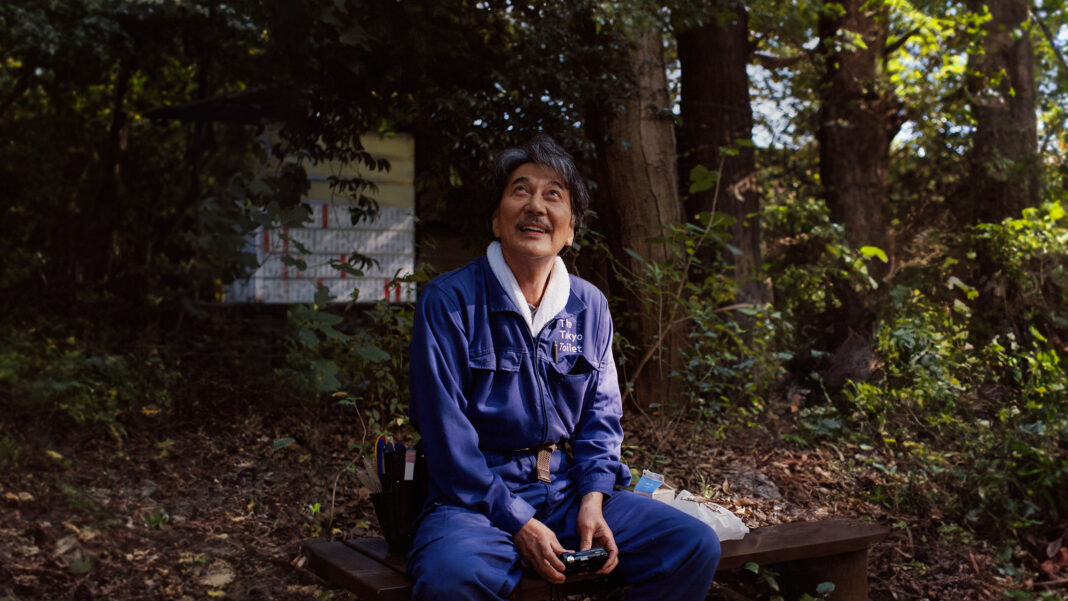A Japanese international film, a German director and a 1960s American rock-and-roll soundtrack. And somehow, it all works.
Perfect Days follows one of the most unique modern cinema plots to date. The film accompanies Hirayama, a meticulous and dedicated Tokyo toilet cleaner who enjoys taking photos of trees on his dingy film camera, content in the rhythmic whir of routine.
That’s it — it’s a simple, slow slice-of-life film about all the little parts of being human.
With no flashy action scenes or major heart-tugging plot turns, Perfect Days excels in depicting the simple, present moment. Its meticulous shot selection and colour grading carefully craft a world in which Hirayama wanders from the Tokyo toilets, to the subway bar, then finally to his room before it all begins again.
Director Wim Wenders, a three-time Oscar nominee for his documentarian work, is obsessed with observing the web of intricacies humans are caught in.
Rare for other films to replicate, Perfect Days evokes this feeling exquisitely as Hirayama’s routine slowly evolves by unfolding new challenges and uncomfortable situations he must overcome. Watching him dance with the camera in this bittersweet tango renders a relatable yearning for a life never lived.
Through its two-hour run time, Perfect Days exemplifies Wenders’ desire to portray the existential, human experience.
For a Japanese-indie film, Perfect Days is an unusual pairing of director and star. Wenders and Koji Yakusho, one of the Japanese cinema greats, combine for a film with barely any on-screen dialogue. Despite this, Perfect Days has claimed eight awards among 35 nominations, the most recent being a nomination for Best International Feature Film at the Oscars and Yakusho’s Best Actor win at the Cannes Film Festival.
With fewer than 10 lines, Yakusho put on an unparalleled and stunning performance as Hirayama. His acting is tender and tasteful in his portrayal of a man comforted in routine.
As silence dominated the majority of the movie, his facial expressions and body movements progressed the plot’s emotional premise. When hugging his sister, the camera silently looms over his shoulder as his head bows — alienating him in the night as he fights the urge to cry.
At these perfect moments, Wenders’s decision to use the atypical 4-by-3 aspect ratio shines through. While modern movies account for the ultrawide (2.4-by-1) theatre experience, Perfect Days opted for a compacted frame. While used less in modern cinema, Wenders chose to shoot with a squarer aspect ratio as an ode to his late idol and mentor, Yasujirō Ozu. By working in 4-by-3, Perfect Days feels timeless and allows for Yakusho to dominate the frame in a more intimate experience than ultrawide would provide.
In a hypnotically tranquil fashion, Perfect Days is a movie that could have run for as long as it wanted, and every person in the theatre would stay. Sacredly connecting to the audience in a manner that resonates profoundly with the human experience, Perfect Days watches a simple man go about his unadorned life. How do we go about ours?
Featured image from IMDb.






